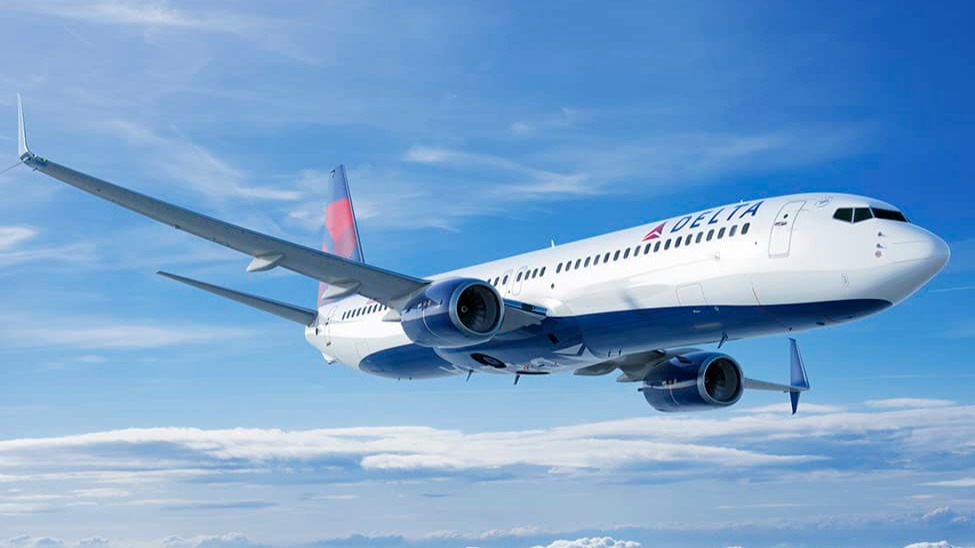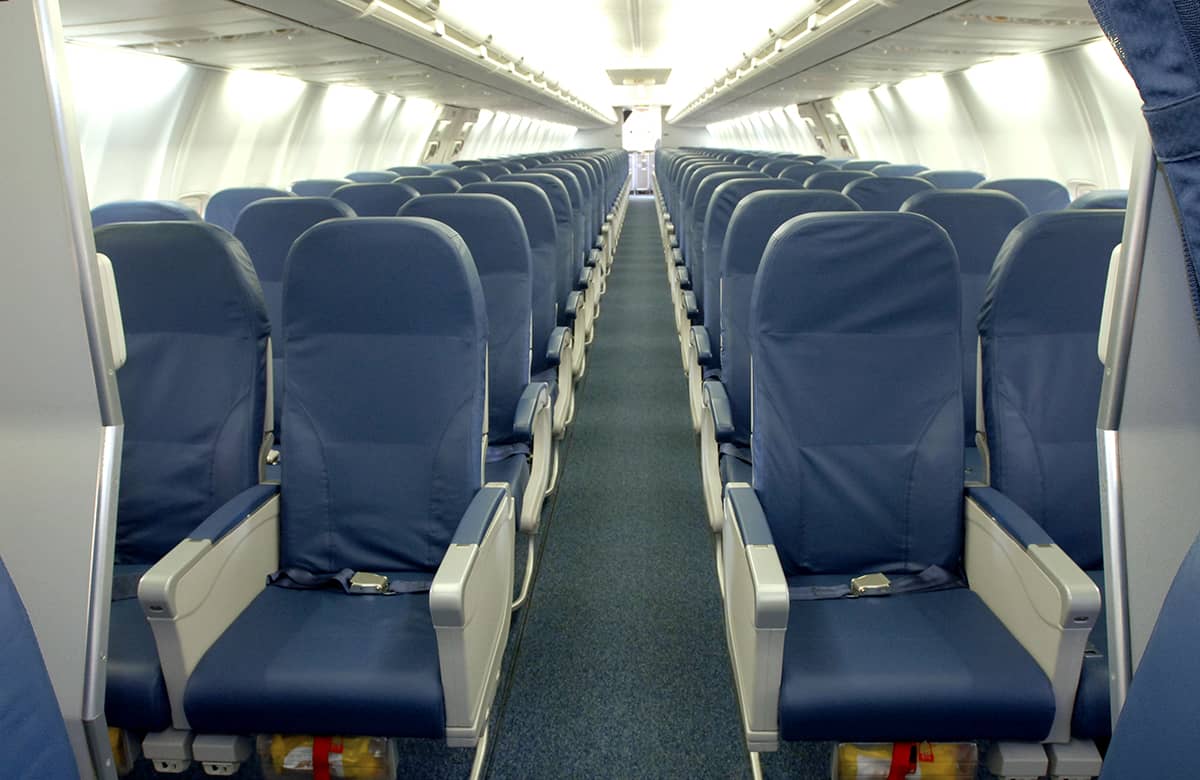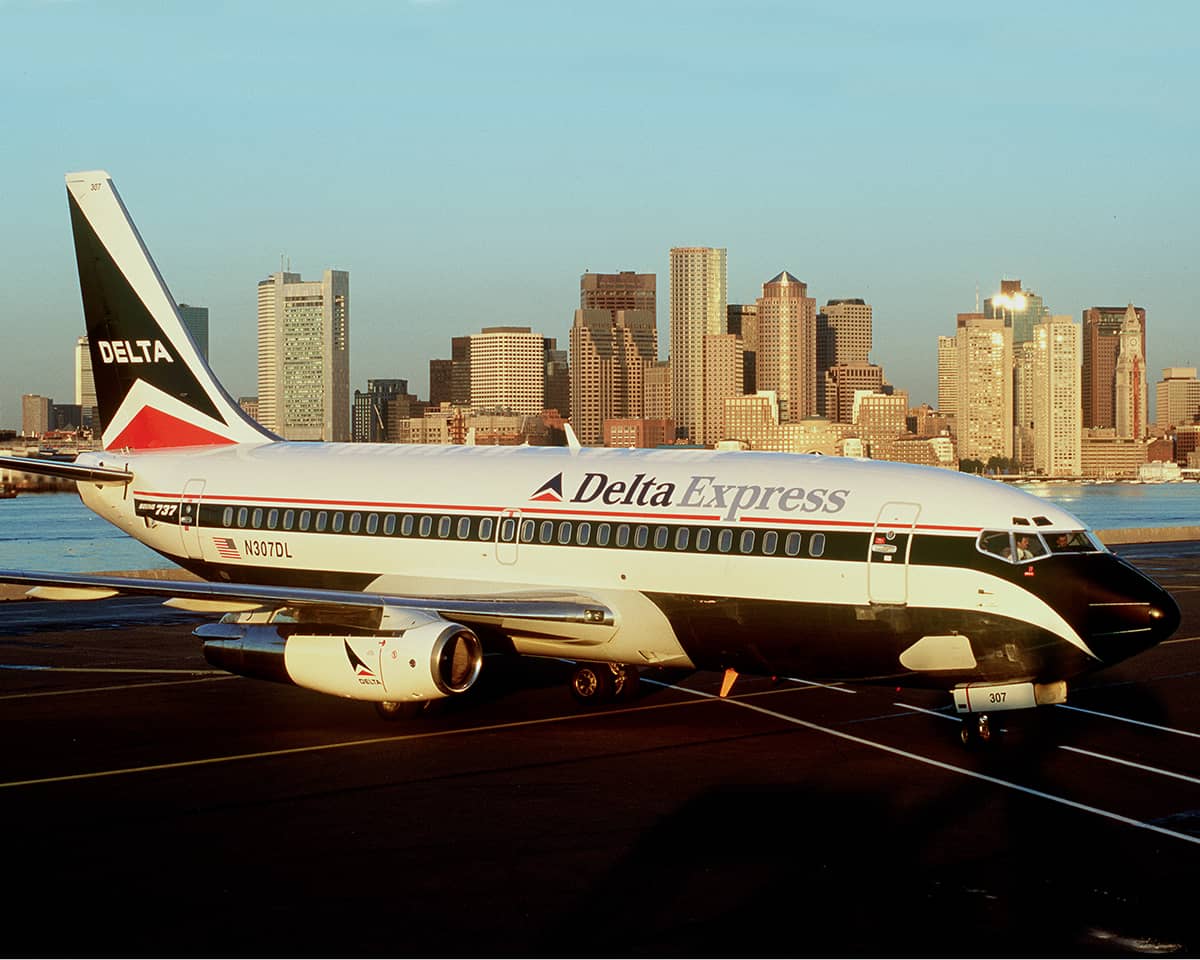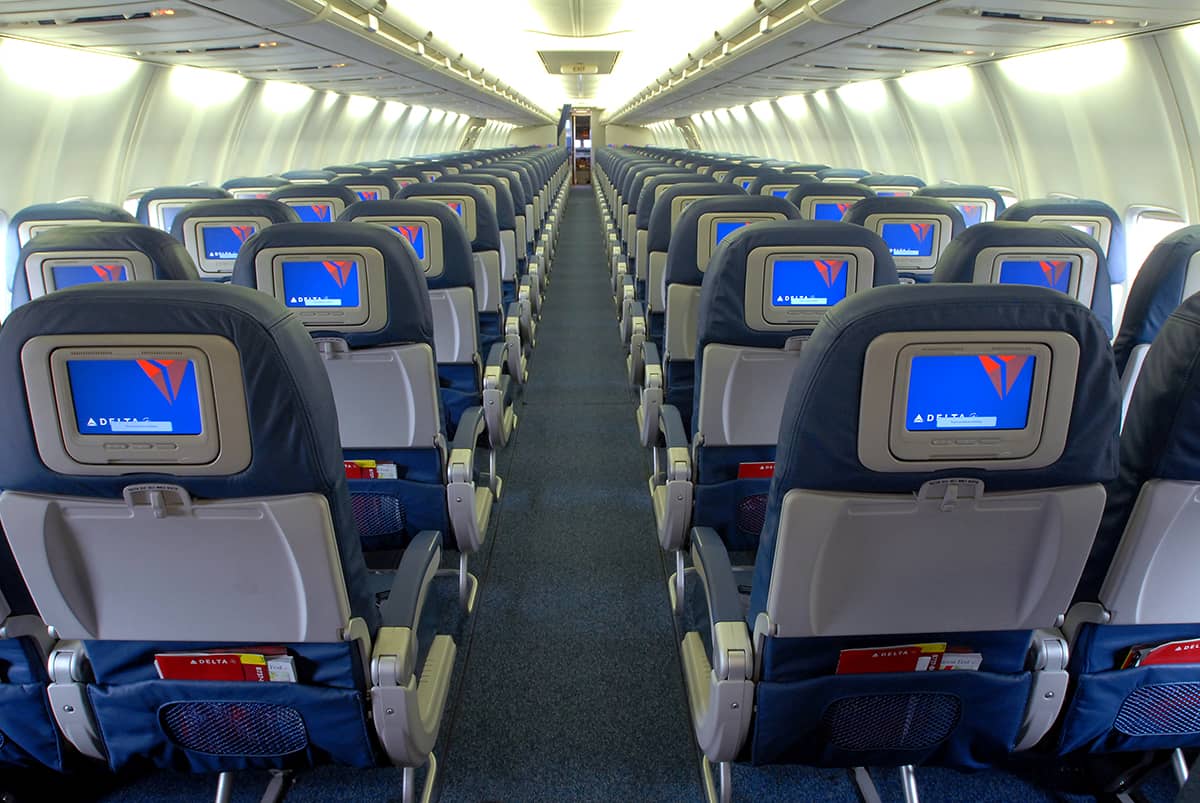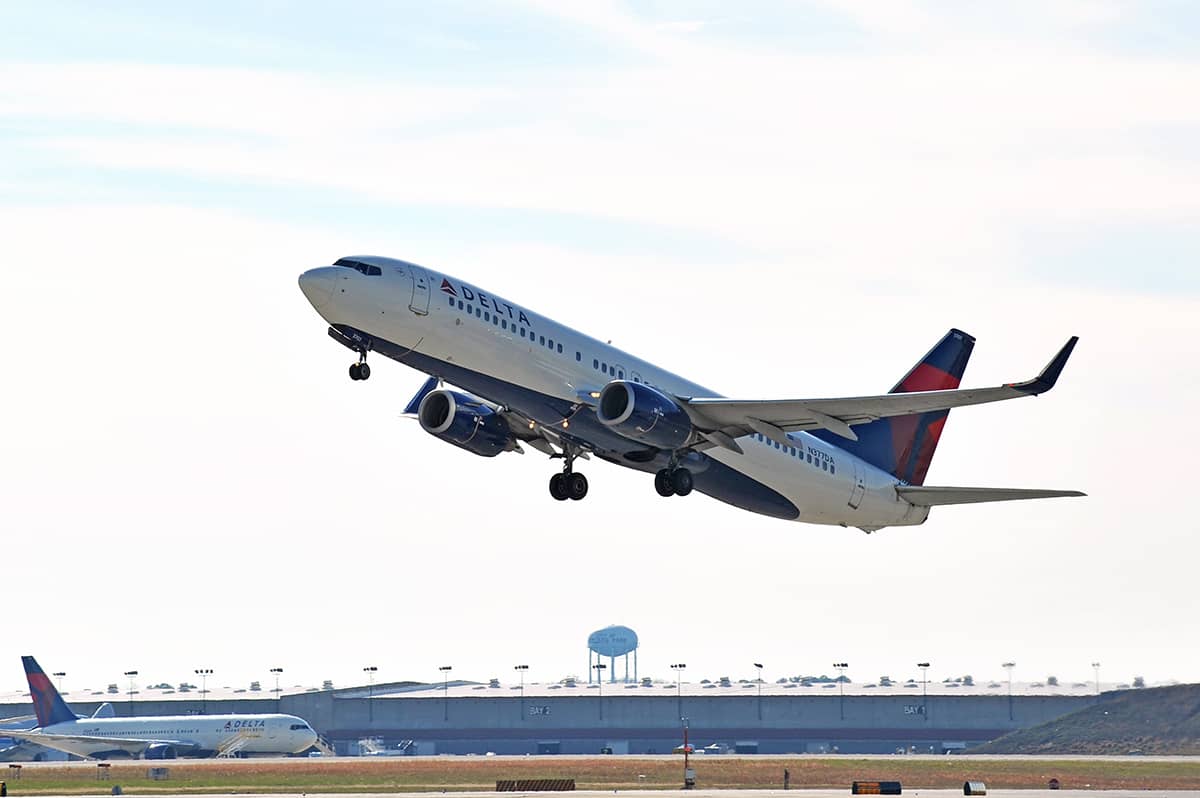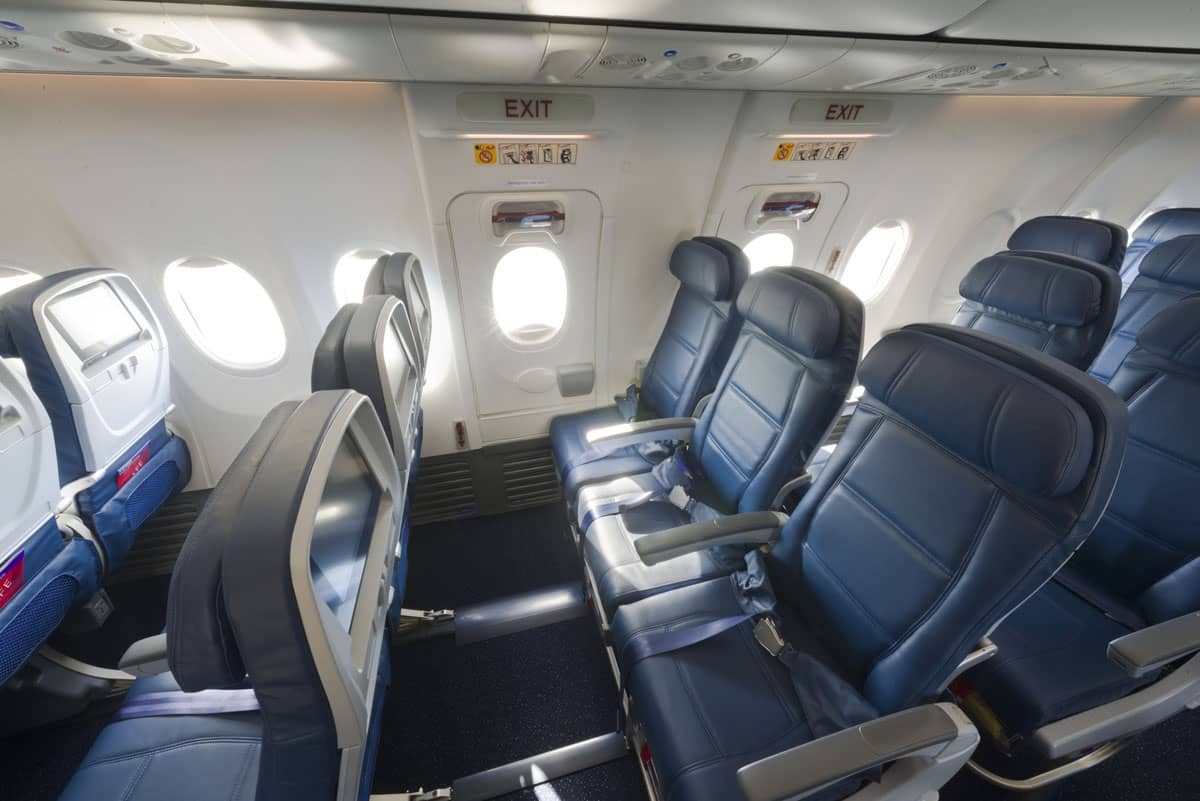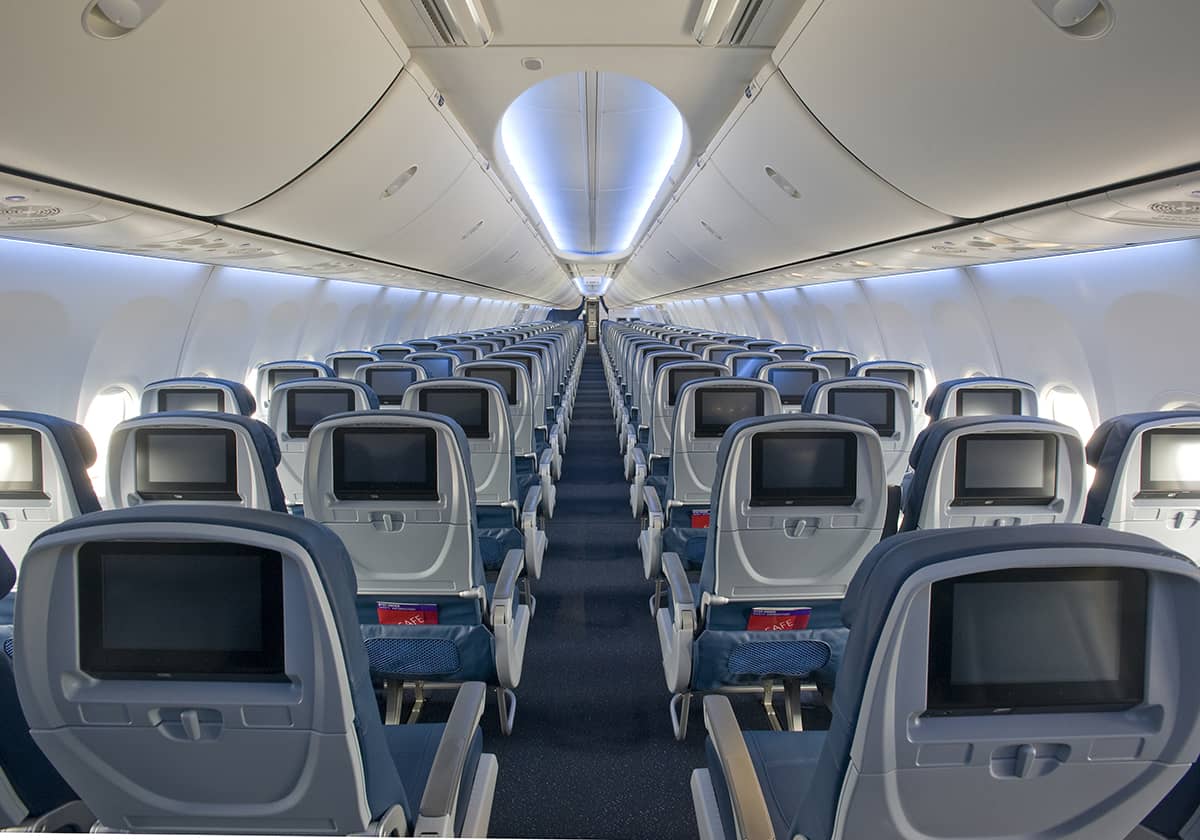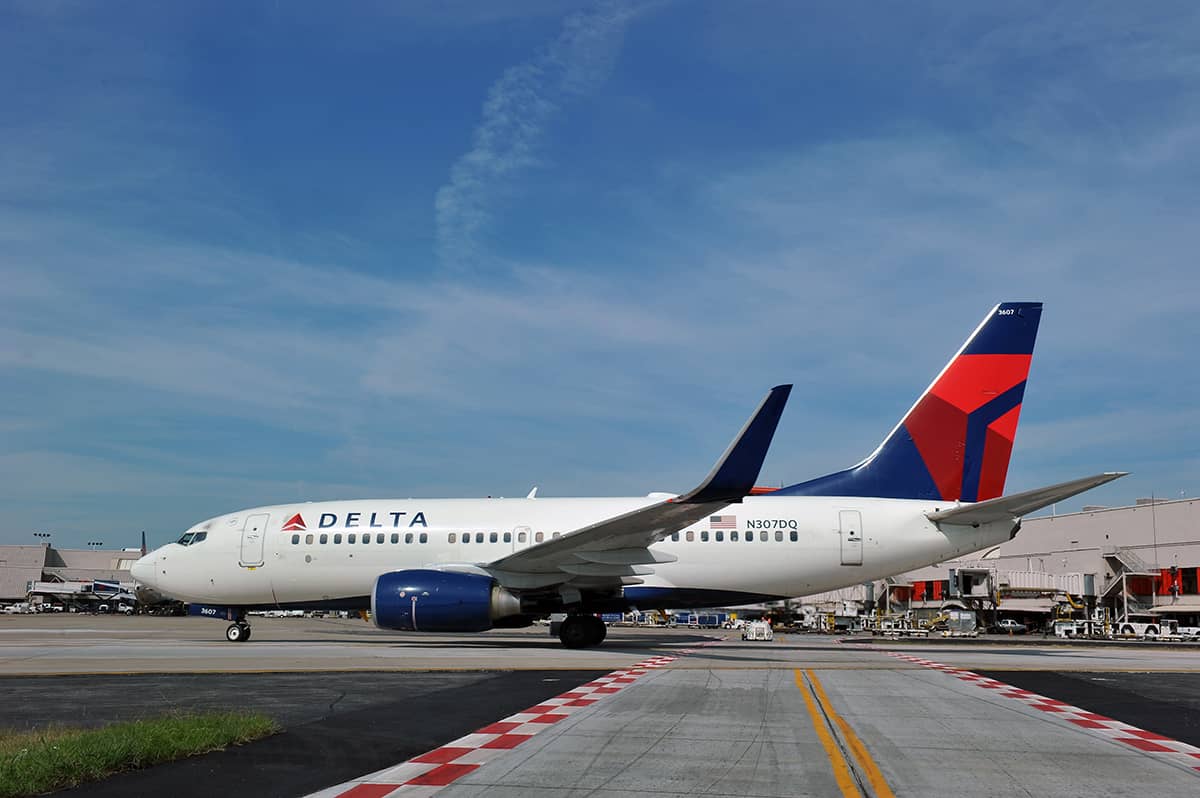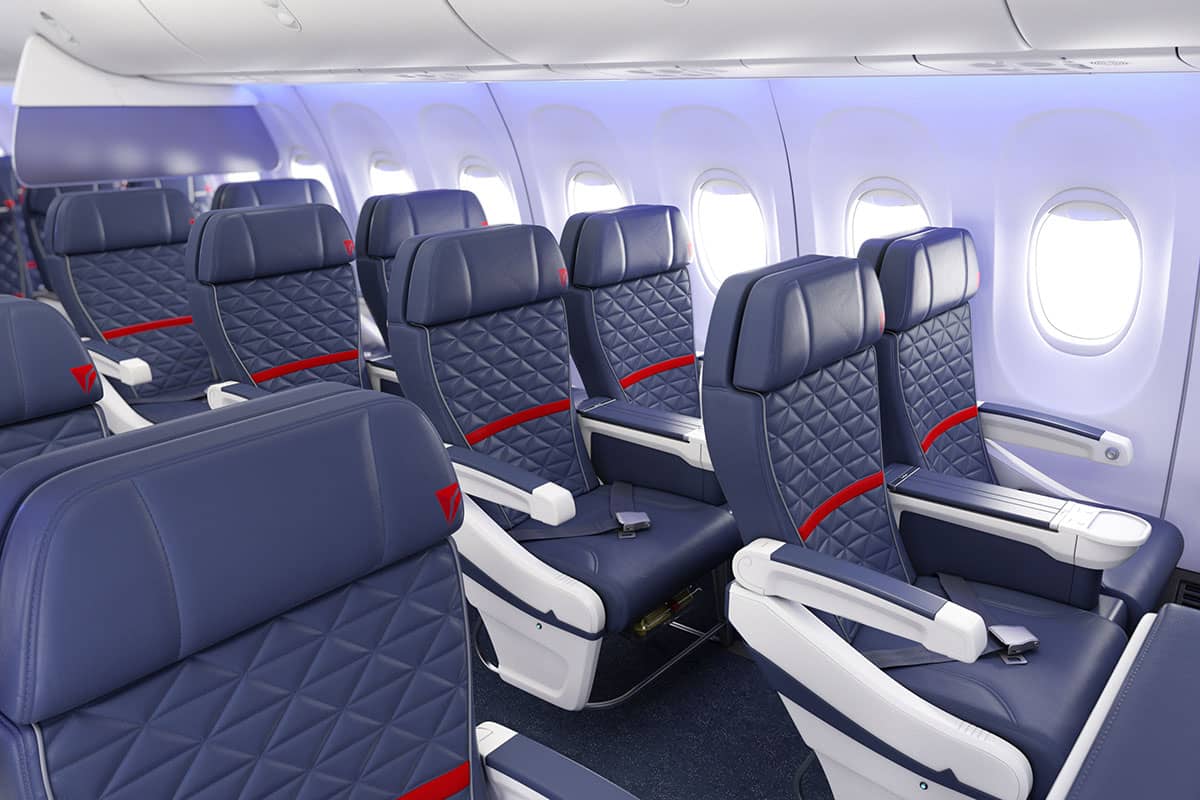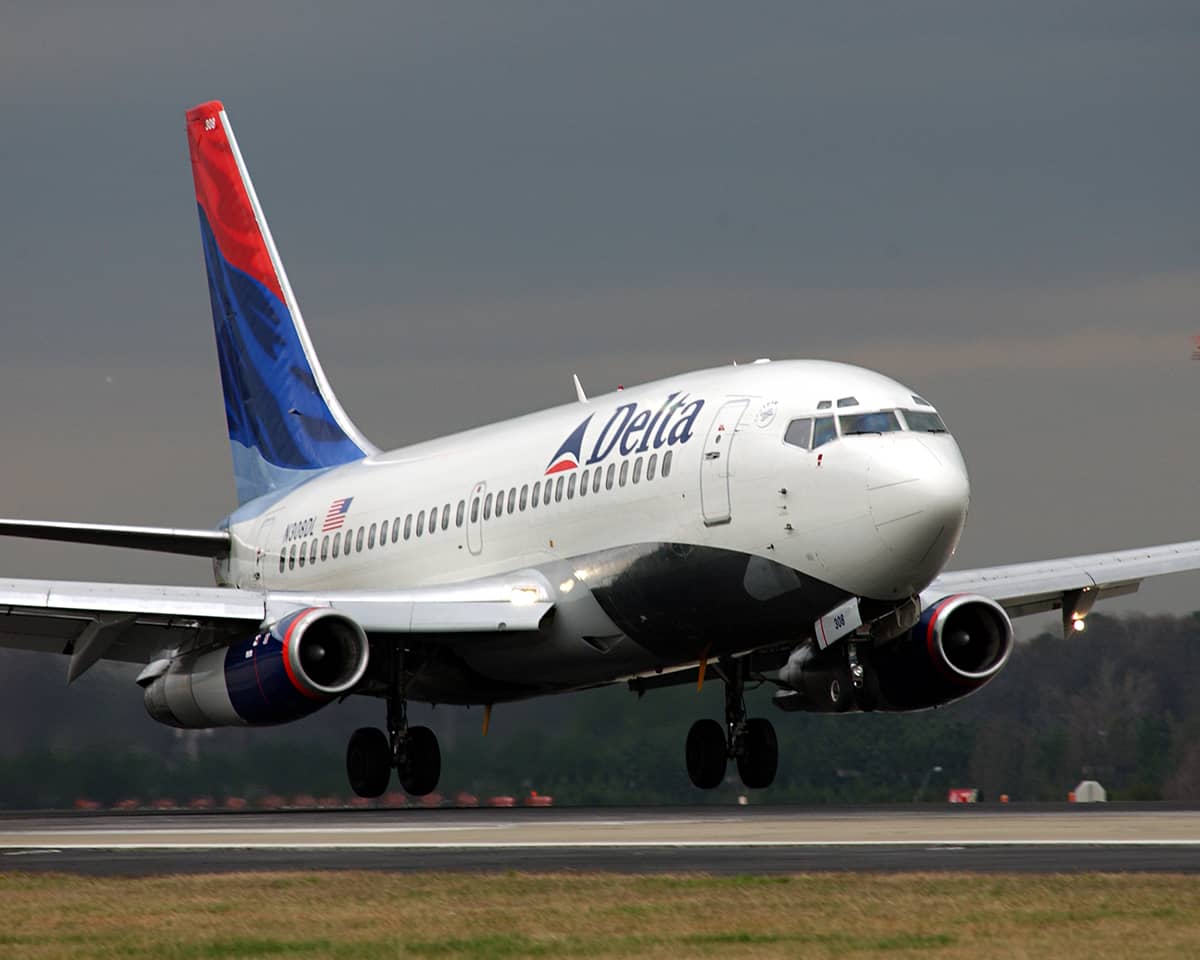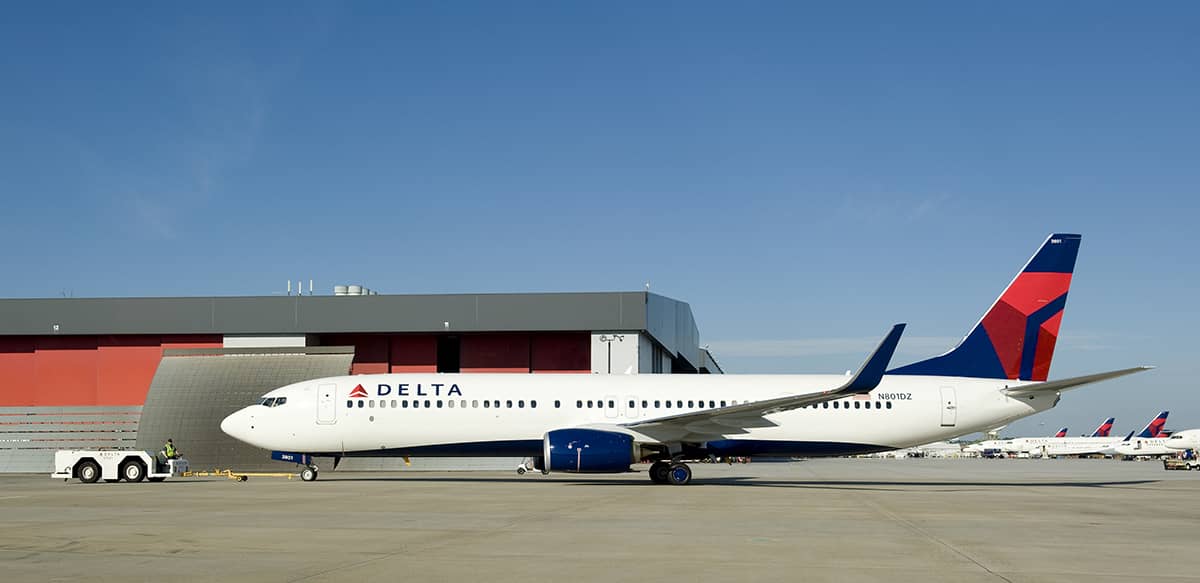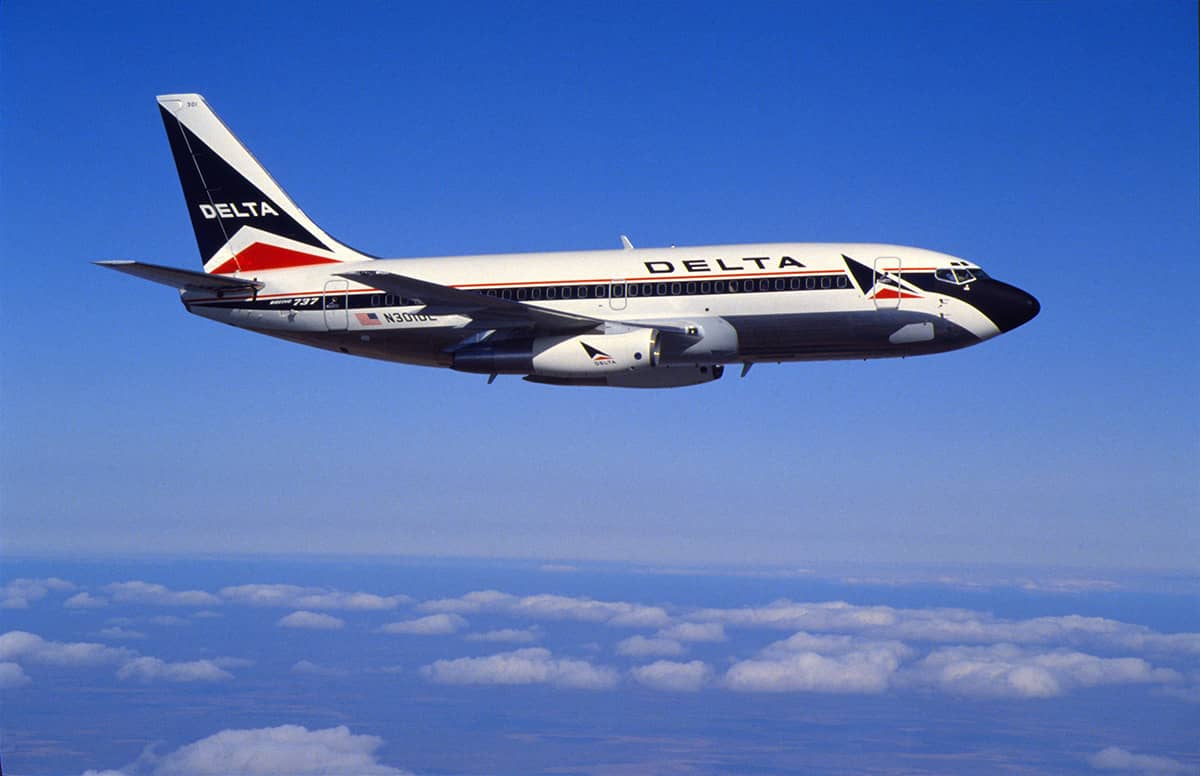Model 347 from Western Airlines
Western Airlines officially merged with Delta on April 1, 1987, and brought 46 Boeing 737s to Delta: 33 of Model 232 and 13 of Model 347.
Western (as well as Lufthansa) was particularly influential in Boeing's design of the 737 as an airport-versatile plane. Learn more. See Western's "737 Special" issue of company's magazine in 1968.
Model 800
"We ordered the new Boeing 737-800 with Central America routes in mind…The use of a brand-new aircraft in Latin America underlines Delta's strong commitment to success in the market. The Boeing 737-800 is the perfect aircraft for shorter international flights, such as Delta's flight from Atlanta to Guatemala City." Delta Managing Director-Latin America Rudi Forster, 1999.
Delta first acquired the 737-800 in 1998:
- Held 154 passengers in 2-class configuration: Business and Economy.
- Powered by two CFM56-7B engines and with new wing design had higher cruising speed than earlier Boeing 737 models.
- Newly designed business-class seats with footrests.
- Larger overhead compartments for carry-on baggage.
Delta placed the 737-800 into service on November 24, 1998. Ship 3703 (N373DA) operated Flight DL1925 from Atlanta to Charlotte, North Carolina (CLT). The flight was originally scheduled to fly from Atlanta to Greenville–Spartanburg International Airport (GSP), but diverted to CLT due to fog at GSP. The aircraft later repositioned to GSP and flew the return flight to Atlanta.
Delta announced that 737-800s would eventually be used on all flights between the U.S. and Central America, and the daily service between Atlanta and Caracas, Venezuela. On April 4, 1999, the 737-800 began flying between Atlanta and Guatemala.
By 2003, 737-800 aircraft had completely replaced Delta's Boeing 727 jets.
In 2006, Delta, operating under bankruptcy protection, announced plans to reduce domestic flights and increase international flights. With these schedule changes, Delta announced plans to sell 38 of its 737-800 that were on order from Boeing and acquire other Boeing aircraft, including the smaller 737-700.
Model 700
"The 737-700 is a better fit for the current needs of our network, providing flexibility in our fleet to fly longer, thinner domestic routes while at the same time supporting our international expansion to Latin America and the Caribbean," Delta Managing Director of Fleet Planning and Acquisition Mel Fauscett, 2008.
Beginning in August 2008, Delta received ten Boeing 737-700s. Improvements:
- Carbon brakes weighing 700 pounds less than steel brakes.
- Drag- and emissions-reducing Blended Winglets (wing tip extensions)
- Cabins with 124 seats (smaller than its 150-seat Boeing 737-800s) to serve smaller and developing markets.
- Replaced older MD-80s in Delta's fleet.
First Delta 737-700 service in August 2008, over mostly domestic routes. On December 18, the 737-700 opened new Delta route between Atlanta and Honduras capital of Tegucigalpa. It allowed Delta to add service to unique airports, such as Tegucigalpa's Toncontin International Airport, with short runways, extreme temperatures and high altitudes.
Delta operated a total of ten 737-700. During the COVID-19 pandemic, Delta retired its 737-700 fleet: N305DQ in March 2020, the remaining nine aircraft in September 2020.
Model 900
First of 100 Boeing 737-900ER's delivered to Delta on September 27, 2013. Entered service on November 1 (Atlanta—Detroit). Intended for long-haul domestic flights and to replace less fuel-efficient and older technology Boeing 757 and 767 and Airbus A320 aircraft.
Cabin has 180 passenger seats. First Delta aircraft with Boeing's new “Sky Interior” with LED lighting, modern, sculpted sidewalls, and overhead bins that disappear into the ceiling yet carry more bags than previous 737 models.
In 2015, Delta began installing split-scimitar winglets on its 737-900ERs to improve overall fuel efficiency.
737-10
In October 2024, Delta announced plans to add 100 fuel-efficient Boeing 737 MAX aircraft to its fleet, with options for 30 more. Delivery of the 737-10, the largest model in the MAX family, scheduled to begin in 2025, is postponed to 2026.
Delta's 737-10 will be powered by the next-generation LEAP-1B engines manufactured by CFM International. The aircraft will be 20%-30% more fuel efficient than the retiring planes it will replace.
With a top speed of Mach 0.79 and a range of 3,300 nautical miles, the 737-10 has broad flexibility to serve Delta markets across the U.S. Delta's 737-10s will first serve core hubs including Atlanta, Boston, Detroit, Los Angeles, Minneapolis-St. Paul, New York and Seattle. It will be introduced with 182 seats: 20 domestic First Class, 33 Delta Comfort+ and 129 Main Cabin.
Customers will experience:
- The Boeing Sky Interior, highlighted by modern sculpted sidewalls and window reveals.
- In-flight entertainment and power ports in every seat.
- High-speed satellite Wi-Fi throughout the aircraft.
- On-demand video content will be available through Delta Studio.
- LED lighting in the cabin that enhances the aircraft’s sense of spaciousness and large pivoting overhead bins.
